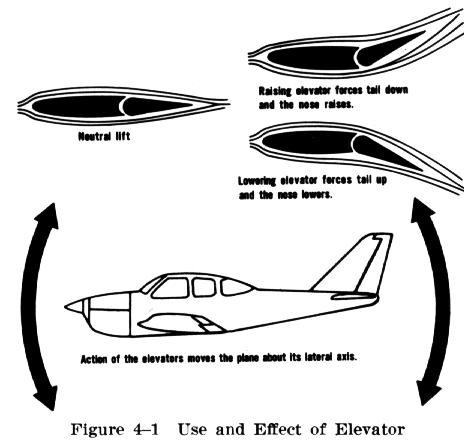| The elevators control the movements of the airplane about
its lateral axis. They form the rear part of the horizontal stabilizer,
and are free to be moved up and down by the pilot, and are connected to
a control stick or wheel in the cockpit by means of cables or rods. Applying
forward pressure on the control causes the elevator surfaces to move downward.
The flow of air striking the deflected elevator surfaces exerts an upward
force, pushing the airplane's tail upward and the nose downward. Conversely,
exerting back pressure on the control causes the elevator surfaces to move
up, exerting a downward force to push the tail downward and the nose upward
(Fig. 4-1).
In effect, the elevators are the angle of attack control. When back
pressure is applied on the control, the tail lowers and the nose rises,
thus increasing the wing's angle of attack and lift.
Some airplanes have a movable horizontal surface called a "stabilator,"
which serves the same purpose as the horizontal stabilizer and elevators
combined. When the cockpit control is moved, the complete stabilator is
moved to raise or lower its leading edge, thus changing its angle of attack
and amount of lift. In turn, this changes the wing's angle of attack and
amount of lift. |
|
